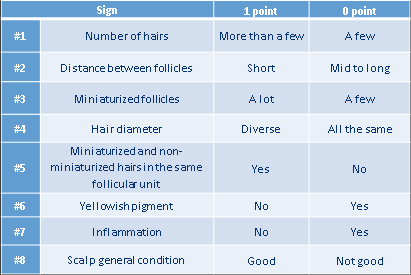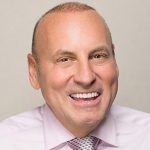August is Hair Loss Awareness Month, and, as one of the more complicated concerns to treat, there’s no shortage of discussion surrounding effective options and protocols.
We met with CSF experts and board-certified dermatologists, Drs. Chytra Anand, Brooke Jackson and Neil Sadick, to discuss their approaches to hair restoration and the future of treating hair loss.
Treatments for Hair Loss
The challenge with treating hair loss is that both the causes and the treatments are complicated and require patience and thoughtfulness in the approach. Dr. Brooke Jackson of Durham, North Carolina explains that hair loss can be caused by hormones, diet, genetics and even how a patient styles their hair—but the biggest factor in finding a successful treatment is finding a doctor who is invested and willing to go the extra mile.
“[These patients] are labor-intensive, it’s often a very emotional subject, [and] you have to dig through everything [the patient] has been using to treat, and figure out what’s been useful [and what has] not,” Dr. Jackson says. She recommends setting aside specific blocks of time for your hair loss patients.
Dr. Jackson explains that, “As dermatologists, we’re in the self-esteem business,” and when treating hair loss as a cosmetic concern, it’s important to recognize how much it can play a role in a person’s self-image. For this reason, she recommends creating a dedicated time to see hair loss patients.
“I would consider having a dedicated hair loss clinic,” Dr. Jackson says. “I do, and it’s been wonderful because if you’re in the groove, and you’re seeing acne, acne, acne [and then] hair loss, your schedule’s just blown. So you really need to give these patients some time and treat them separately,” she says.
Many patients that come to a doctor for hair loss concerns have tried at-home and over-the-counter treatments, such as supplements or at-home devices. Some supplements, such as Viviscal Professional or Nutrafol, have shown promising results. Alternatively, some patients have seen success with topical treatments like ReTress and KeraFactor, which were both developed by board-certified dermatologists and CSF faculty members, Dr. Candace Spann and Dr. Amy Taub, or at-home devices like HairMax.
While the use of supplements and at-home devices can play a role in a successful mild to moderate hair loss treatment protocol, they are generally not able to address advanced cases on their own.
For these situations, Dr. Chytra Anand of Bangalore, India and Dr. Neil Sadick of New York, New York, utilize fresh and innovative approaches to deliver results where other treatments have not: Progenitor Cell Therapy and PRP combined with microneedling or Fraxel laser, respectively.
Progenitor Cell Therapy
Progenitor Cell Therapy, a common hair loss treatment being performed in India, Dr. Anand explains, is a cell therapy treatment that works by taking micrografts from the hair line and re-injecting them into the scalp.
These micrografts, which are rich in progenitor (stem) cells, growth factors and an extracellular matrix, produce a more noticeable affect than when using platelet-rich plasma cells which only contain growth factors, Dr. Anand says.
To perform the procedure, Dr. Anand uses a 27 gauge needle with an injection depth of approximately three millimeters. Next, she prepares the micrografts by placing them into “a specialized machine containing 600 microblades that turns the tissue into a solution that is injected right away.” Because there is no blood extraction, it is fairly painless and results are often seen within four to six months.
While this treatment is not being performed in the United States at this time, Dr. Anand expresses a genuine interest in the results that it offers—but she says patient selection is critical. She breaks down the criteria in the chart below. If a patient has a score of 5 or below, they are not an ideal candidate. If they have a score of six or higher, they should experience results.

Chart Courtesy of Dr. Chytra V. Anand
Dr. Anand explains that an ideal patient would be experiencing mild to moderate thinning and hair loss, a healthy scalp and a healthy nutrition status. She explains that visible signs of hair miniaturization is mandatory to ensure the micrografts are viable.
If a patient is not a good candidate for Progenitor Cell Therapy, they may also not be a suited for PRP—but may experience results with a hair transplant. In these cases, Dr. Anand has seen some success with Progenitor Cell Therapy six months post-transplant.
Since the 2019 Cosmetic Surgery Forum, Dr. Anand says that she now combines PRP with Progenitor Cells. “I perform the Progenitor Cell procedure and after six months I perform PRP [on a] quarterly basis. This has enhanced my results,” she says.
The procedure itself is approximately 45 minutes from beginning to end and doesn’t require extensive aftercare. Dr. Anand says there are no stitches, the procedure is fairly painless and easily tolerated, and it can be repeated on a yearly basis. The patient simply needs to keep the donor site clean for approximately five days.
PRP Combined with Microneedling or Fractional Laser
While use of PRP is on the rise and has shown promising results, Dr. Sadick has achieved better outcomes with combination therapies. In his research, he has noted that the optimal treatment protocol is to combine PRP with tools, such as microneedling and fractional lasers.
“Anything that injures the hair follicle will cause a clinical wound response and upregulations of cytokines associated with remodeling that will stimulate stem cells in the hair bulge and hair papilla, and that’s why almost everybody uses this in combination with some other technology,” Dr. Sadick says.
The most important facet, Dr. Sadick explains, is being able to have some way to measure the efficacy of treatment. “We need to have objective data to tell us [and our patients] whether or not this technology really is working,” he says.
To measure the efficacy of treatment, Dr. Sadick has worked to develop a non-invasive hair measurement device with Canfield which counts hairs in standardized zones, allowing physicians to perform a hair density count prior to and throughout treatment. It does not require any special preparation our outside labs, and an assessment can be made in as little as three minutes.
The hair imaging device allows physicians to determine the density of follicular units per square centimeter, in addition to determining if a hair is in the anagen, catagen and telogen phases of growth. Finally, it is able to create an index of growing hairs vs. velus types—allowing physicians to accurately measure how a patient responds to treatment.
Finally, Dr. Sadick notes, another important facet of combination therapy is the actual treatment protocol. The majority of research shows that the best protocol is one treatment a month for three months, but Dr. Sadick has attempted to increase this duration. For example, if a patient shows a positive response to one treatment a month for three months, he will move treatments to every other month, then every three months and every six months. At this time, the longevity of treatment is still being tested.
While a cure for hair loss continues to remain elusive, advances in technology are showing promise. What are your favorite tools for treating hair loss? Let us know in the comments below!






Leave a Comment